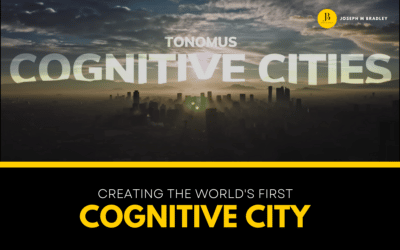Do you know the deflated, panicked feeling when the best player leaves a team, leaving a vacuum of knowledge and expertise to be filled? It happens in sports, and it happens in business. Joseph calls this “brain drain.” Your ability to retain knowledge in business is fundamental, but most executives don’t talk about it enough. In this video, Joseph offers tips on how to prioritize this important function of any organization:
- Understand the context of your decisions
- Invest in training
- Commit to mentorship
Knowledge transfer is essential to maintain your competitive position in a hyper-innovative market.
Transcript:
If you’re a basketball fan or any sports fan like myself, you dread that moment when that top player leaves your team, either through retirement or they’re traded away. Well, this same phenomenon happens in the business world, and the impacts can be devastating.
If you think about Apple, Steve Jobs starts the company, then he leaves. They lose their way.
Then he comes back and infuses that passion for customer experience, and Apple becomes the behemoth that it is today.
When you actually listen to many executives talk about their key imperatives for their organization, knowledge retention is not one of them. This concept of brain drain, that I call it, is critically important to establishing competitive differentiation in a hyper-innovative market that we have today. Your ability to retain knowledge in your business is fundamental in order for you to maintain your competitive position. Yet, as I said, it’s not talked about a lot.
So let me give you three realistic and applicable things you can do right now to help avoid brain drain in your organization.
The first thing you need to understand is that data only becomes knowledge that you can retain if it’s in the proper context. It has to come with context. That’s why simply hiring or building knowledge management tools and just keeping a bunch of data doesn’t help to solve the problem. Often times you’ll hear people say, “Oh, I heard you do action x or action y”, and their come back will be, “Well wait wait wait a minute. You don’t understand the right context or the proper context.”
I’ve created a tool, a simple one pager, that I use each and every day called PSAM; Purpose, Strategy, Action, and Metrics. Its whole goal is to ensure that you have context around the decision.
So on one slide, the header is the purpose. What are you trying to achieve with your organization? The next, why are you trying to achieve it, and how is the strategy? You may have 3 to 5 strategy elements. Underneath each of those strategy elements you have a list of actions. This is your knowledge. This is your knowledge base. And behind that list of actions, you have the core metric or what were you trying to achieve.
Now on one document, imagine; you have the key decisions that you made in your organization, and you have the context in which you made those decisions and the metrics and the outcomes that you were trying to drive. PSAM is a great, great structure to use.
Now let’s talk about the second area. Culture eats strategy for lunch, each and every day. If culture was a basketball game and you have culture at 90, strategy at 10. The important thing to understand is you have to commit to changing the culture to embrace knowledge transfer. If not, you’re not walking the talk.
Let me give you a real solid key example. If you ask most executives, “What have you spent on training? Do you have a training budget?”, they’ll tell you they have a budget, but they don’t know how much they spend on training. Under running a training budget should not be ever celebrated. You should invest and use that training budget to the maximum potential. If I told you that for every dollar you spent, you can get back ten, you would continue to spend.
You need to think about that as training. For every dollar you invest, the multiplier is tenfold with employees. Training is critical, a critical area, critical investment area to ultimately change your culture and drive the type of knowledge transfer and avoid brain drain.
The third thing kind of piggybacks off this and that is what gets measured is important and what gets measured gets done. You need to measure the impact of what you’re doing in your organization around knowledge transfer. Probably the most overlooked measurement of all is mentorship. When you mentor someone, that’s your opportunity to exchange knowledge and exchange information. You’ve got to connect with that individual at a personal level so you can drive that level of energy and that level of excitement.
Most of us don’t mentor, and mentorship is not measured. It needs to be. Are the people you mentoring actually improving or they’re getting a better experience? Are their skills enhancing? This is one practical measure that you could have.
So again, if you want to avoid that feeling that you get when your favorite basketball player or football player leaves the team – or in the case of Apple, when Steve Jobs left and came back – if you want to avoid that feeling of brain drain and the impact it has on your business, you’ve got to do something. You’ve got to commit to action.
Start with the PSAM process. Purpose, Strategy, Action, and Metrics.
Next measure that training.
Finally, commit to full mentorship in your organization.
If you do these three things, you’ll be well on your way of avoiding the great brain drain.
Thank you.





